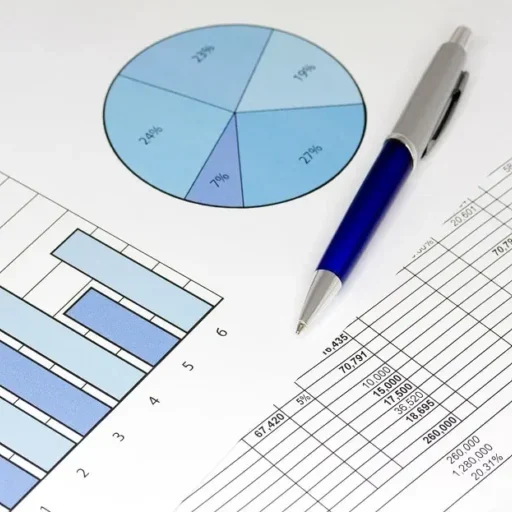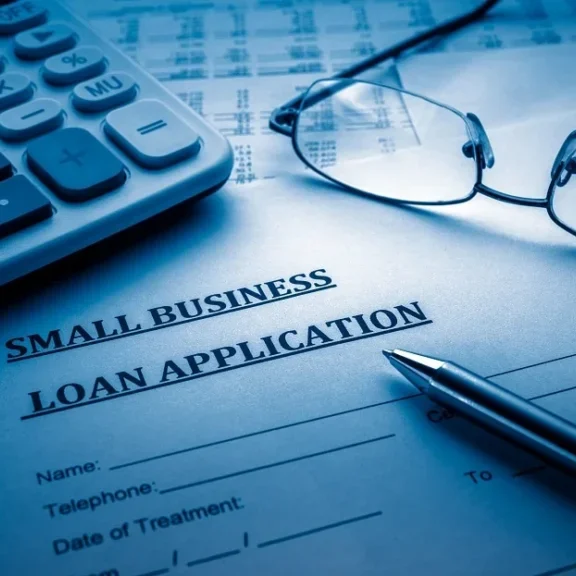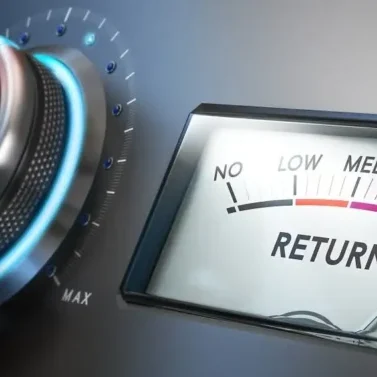How Much Money do You Need to Buy a Business?
Summary: Buyers, sponsors, and managers often want to know how much money they will need to acquire a company. They may be trying to gauge the size of the company their funds can acquire or the scale of the equity injection. Ultimately, it's the same question.
The answer to this question depends on many factors. The average equity injection is 10% - 20% of the total transaction cost. However, this figure is only an average. The equity injection for a specific transaction could be much higher or lower depending on the transaction's details.
This article will help you determine how much money you need to buy a business. However, to do this, you must understand how acquisitions work, how their size is determined, and how they are financed. We cover the following:
- The equity injection
- The simple calculation
- Acquisition cost components
- The actual cost of an acquisition
- How much money do you really need?
1. The equity injection
The equity injection is the minimum capital contribution buyers must provide to buy a company. It is required by lenders, who typically finance the largest part of most transactions.
The size of the equity injection ultimately determines the amount of money the buyers need to complete an acquisition. It is determined by the transaction's size, risk profile, and the type of financing you use.
The business acquisition market is roughly divided into three segments with distinct requirements.
a) Small business acquisitions (under $5 million)
These acquisitions are typically financed with Small Business Administration (SBA) backed financing. We consider SBA-backed financing a great resource for these acquisitions. It provides flexible, affordable, and accessible financing to many small business entrepreneurs.
The SBA typically requires buyers to contribute at least 10% of the total transaction costs. The transaction costs include:
- Cost of buying the business
- Additional funding for CapEx
- Additional funding for Working Capital
- Closing costs
The amount of seller financing does not affect the equity injection size. This can be counterintuitive to new buyers. Consequently, a $3 million acquisition requires a $300,000 equity injection (10% of $3 million) even if the seller provides substantial financing.
Note: The equity injection can go as low as 5% if the seller provides 5% seller financing and agrees to a standby. However, it is safer not to count on this.
b) Lower market acquisitions ($5 million - $10 million)
Lower market transactions, valued between $5 million - $10 million, have the highest equity injection requirements. They typically require a 20% injection, though it can sometimes be higher.
These opportunities fall in a gray area. They are too large to be financed with SBA-backed loans but too small for most private credit lenders. Consequently, financing is difficult to get. There are few providers with very selective requirements.
The equity injection is based on a percentage of the financing amount. Seller financing and seller equity rollovers can reduce the financial burden.
c) Middle-market acquisitions (over $10 million)
Middle-market acquisitions, those valued over $10 million, typically have equity injections of 10% or lower. In general, lenders and private credit companies consider these opportunities more attractive due to their size. Consequently, they get more flexible financing terms.
The equity injection is based on a percentage of the financed amount. Seller financing and seller equity rollovers also lower the financial burden on buyers.
To learn more, read "How to finance a middle-market acquisition."
2. The simple estimate
The simplest way to estimate how much money you need to buy a business is to multiply the acquisition price by the expected equity injection. This method is imperfect and has several obvious limitations, covered in the caveats.
A rough initial capital calculation is useful because it gives buyers an idea of their initial requirements. Keep in mind the acquisition will likely cost much more, though.
Let's consider three examples, each from a different market segment.
a) Company A - $3 million.
This company is considered a small business acquisition and will likely be financed using SBA-backed financing. Assuming a 10% equity injection, the buyer would need $300,000 ($300,000 x 10%) to buy the company.
b) Company B - $7 million.
This company is a lower market acquisition and financed through a boutique lender. Lower market acquisition requires an average 20% equity injection. Consequently, the buying team would need around $1.4 million ($7 million x 20%) to acquire this business
c) Company C - $13 million
This company is a middle-market acquisition and financed through a private credit company. It requires an equity injection of 10%, though it could be less if the opportunity is attractive. A buyer would need around $1.3 million ($13 million x 10%) to acquire the company.
d) How big a company can you buy?
This method also works in reverse. Let's assume you want to acquire a small business and have $300,000 to invest. In principle, the biggest company you could buy would be valued at around $3 million. We calculate this by dividing $300,000 by 10%.
e) Caveats
This method has some important caveats that buying teams should consider. It is missing components that are part of every transaction. These include:
- Capital Expenditures
- Working Capital
- Transaction costs
- SBA guarantee (small business acquisitions only)
Seller financing does not affect the size of the equity injection for a small business acquisition. However, seller financing and equity rollovers reduce the equity injection burden in lower and middle-market transactions. This is an important detail that buyers must remember.
3. Acquisition cost components
In this section, we review all the cost components of an acquisition. We can use these to determine the total cost of the project and the required capital injection.
a) Cost of the business
The largest cost of any business acquisition is the cost of the company itself. Lower and middle-market companies are typically valued based on a multiple or Earnings Before Interest, Taxes, Depreciation and Amortization (EBITDA). Smaller companies are typically valued as a multiple of the Seller's Discretionary Earnings (SDE).
b) Capital Expenditures (CapEx) additions
CapEx are expenditures used to buy or improve physical assets. These include buildings, technology, equipment, and so on. This component can be significant since buyers often want to improve their acquisitions.
c) Working Capital additions
Working capital refers to the funds you can use to run your new company. Most lenders require that the acquisition target have a few months of working capital available. Buyers have these funds available personally or ask lenders to add them to their loans.
d) Due diligence costs
The cost of due diligence includes items such as asset appraisals, financial reviews, and so on. Given the importance of due diligence, new buyers should consider getting a Quality of Earnings (QoE) report from a qualified provider. These reports can help identify important transaction risks you may have overlooked.
e) Closing costs
Closing costs are the expenses associated with getting the transaction funded. They include the following:
- Legal costs
- Titles and transfers
- Consultants, loan packaging, etc.
- SBA guarantee fee (small business acquisitions. 2% - 3.5%)
As with due diligence costs, the buyer can bundle some of these costs into the loan.
4. Total cost of a business acquisition
The simple estimate in section 2 only used the company's cost to determine the capital needed to buy a business. In reality, buyers must pay for all the costs of buying a company. These can be summed up into a simple formula:
Total cost = business cost + capex + working cap + due diligence + closing costs + other costs
The buying team can get a much better estimate using this figure instead of just using the cost of the business alone. If the transaction exceeds $5 million, buyers must determine if the seller will participate with financing or a rollover. These will reduce the buyer's capital burden.
5. How much money do you need to buy a company?
A better way to estimate an acquisition's equity injection is to use the total acquisition cost we covered in the previous section. You will need to have a reliable estimate of the:
- Capital expense additions
- Working capital additions
- Due diligence costs
- Transaction costs
- Seller financing
- Seller equity rollover
a) Small business acquisition
For acquisitions under $5 million, the equity injection should be around 10% of the acquisition cost. Seller financing does not affect this amount, with one exception. If the seller provides 5% of seller financing and agrees to a standby, the equity injection can be reduced to 5%.
Generally, partial sales or equity rollovers are not allowed SBA transactions except in limited cases. Ultimately, it depends on the structure. Note that this may change as rules change Let's assume a simple transaction with a total acquisition cost of $4 million. That cost includes the items previously mentioned, such as the business, capital expenditure additions, due diligence, etc.
A transaction of this size has an average 10% equity injection requirement, leading to a $400,000 ($4 million x 10%) approximate capital requirement. Said differently, a buyer with $400,000 in capital could buy a business whose total transaction cost is $4 million ($400,000 / 10%).
b) Lower market and middle market acquisitions
The equity injection for lower and middle market acquisitions is a percentage of the acquisition cost, net of seller financing, and rollovers. Consequently, the equity injection is based only on a percentage of the financing amount.
Financing amount = acquisition cost – seller financing – equity rollover
Let's consider the following lower market example. Assume a $8 million acquisition where the seller is financing $500,000 and rolling over $1 million. The financing amount would be $6.5 million ($8 million - $1 million - $500,000). This leads to an equity injection of $1.3 million ($6.5 million x 20%).
Note: Lower market transactions have higher equity injection requirements than other acquisitions.
Lastly, let's consider a middle market example. Assume a $20 million acquisition where the seller is financing $2 million and rolling over $3 million. The financing amount would be $15 million ($20 million - $2 million - $3 million). This leads to an equity injection of $1.5 million ($15 million x 10%).
Want to finance a business acquisition?
The first step to work with us is to submit this form. Once we review it, one of our associates will contact you to discuss the specific details of your acquisition.







